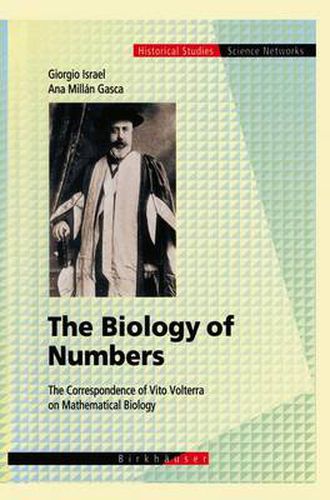Readings Newsletter
Become a Readings Member to make your shopping experience even easier.
Sign in or sign up for free!
You’re not far away from qualifying for FREE standard shipping within Australia
You’ve qualified for FREE standard shipping within Australia
The cart is loading…






This title is printed to order. This book may have been self-published. If so, we cannot guarantee the quality of the content. In the main most books will have gone through the editing process however some may not. We therefore suggest that you be aware of this before ordering this book. If in doubt check either the author or publisher’s details as we are unable to accept any returns unless they are faulty. Please contact us if you have any questions.
Foreword The modern developments in mathematical biology took place roughly between 1920 and 1940, a period now referred to as the Golden Age of Theoretical Biology . The eminent Italian mathematician Vito Volterra played a decisive and widely acknowledged role in these developments. Volterra’s interest in the application of mathematics to the non physical sciences, and to biology and economics in particular, dates back to the turn of the century and was expressed in his inaugural address at the University of Rome for the academic year 1900/01 (VOLTERRA 1901). Nevertheless, it was only in the mid-twenties that Volterra entered the field in person, at the instigation of his son in law, Umberto D'Ancona, who had confronted him with the problem of competition among animal species, asking him whether a mathematical treatment was possible. From that time on, until his death in 1940, Volterra produced a huge output of publications on the subject. Volterra’s specific project was to transfer the model and the concepts of classical mechanics to biology, constructing a sort of rational mechanics and an analytic mechanics of biological associations. The new subject was thus to be equipped with a solid experimental or at least empirical basis, also in this case following the tried and tested example of mathematical physics. Although very few specific features of this reductionist programme have actually survived, Volterra’s contribution was decisive, as is now universally acknowledged, in en couraging fresh studies in the field of mathematical biology.
$9.00 standard shipping within Australia
FREE standard shipping within Australia for orders over $100.00
Express & International shipping calculated at checkout
This title is printed to order. This book may have been self-published. If so, we cannot guarantee the quality of the content. In the main most books will have gone through the editing process however some may not. We therefore suggest that you be aware of this before ordering this book. If in doubt check either the author or publisher’s details as we are unable to accept any returns unless they are faulty. Please contact us if you have any questions.
Foreword The modern developments in mathematical biology took place roughly between 1920 and 1940, a period now referred to as the Golden Age of Theoretical Biology . The eminent Italian mathematician Vito Volterra played a decisive and widely acknowledged role in these developments. Volterra’s interest in the application of mathematics to the non physical sciences, and to biology and economics in particular, dates back to the turn of the century and was expressed in his inaugural address at the University of Rome for the academic year 1900/01 (VOLTERRA 1901). Nevertheless, it was only in the mid-twenties that Volterra entered the field in person, at the instigation of his son in law, Umberto D'Ancona, who had confronted him with the problem of competition among animal species, asking him whether a mathematical treatment was possible. From that time on, until his death in 1940, Volterra produced a huge output of publications on the subject. Volterra’s specific project was to transfer the model and the concepts of classical mechanics to biology, constructing a sort of rational mechanics and an analytic mechanics of biological associations. The new subject was thus to be equipped with a solid experimental or at least empirical basis, also in this case following the tried and tested example of mathematical physics. Although very few specific features of this reductionist programme have actually survived, Volterra’s contribution was decisive, as is now universally acknowledged, in en couraging fresh studies in the field of mathematical biology.